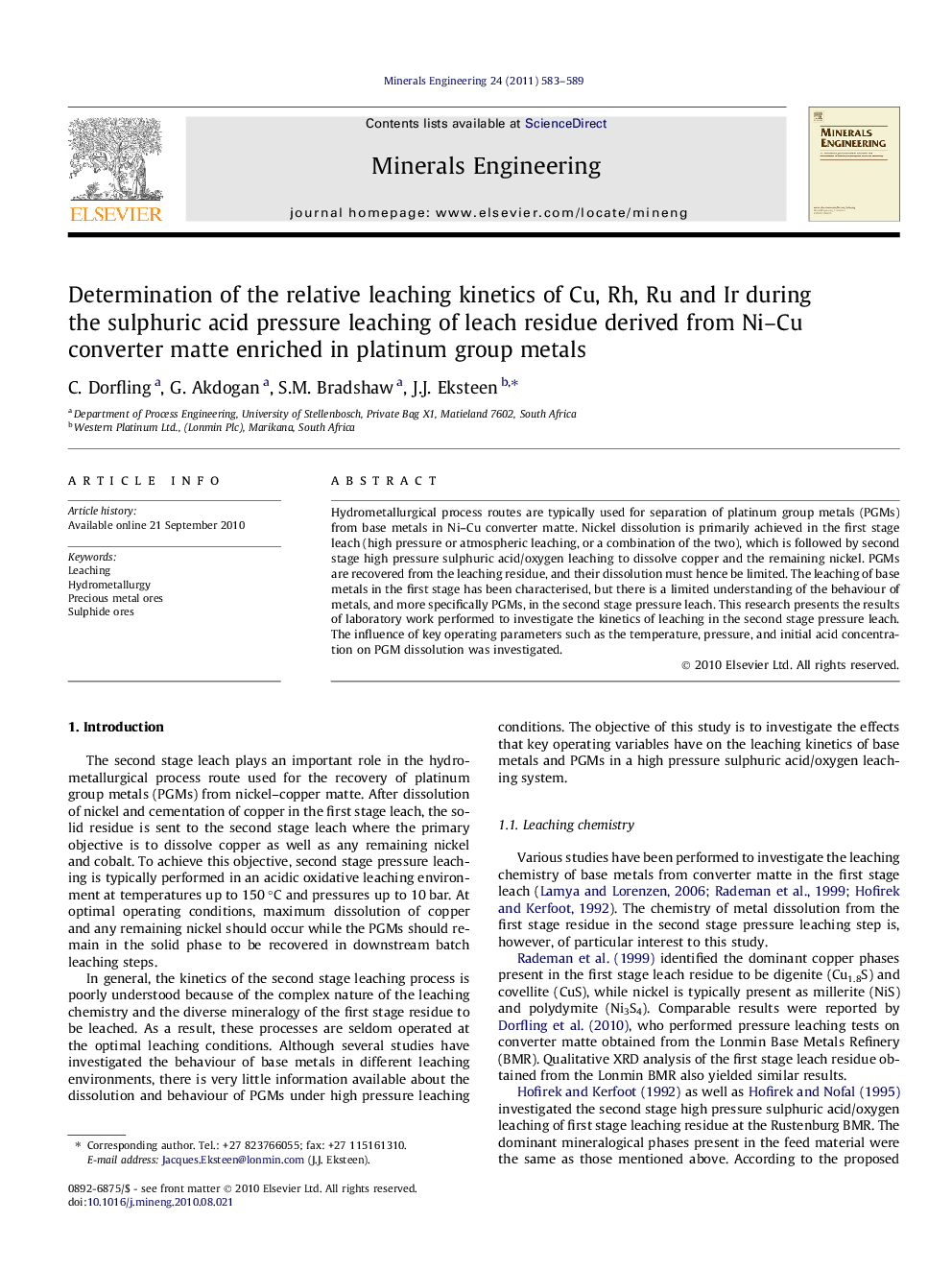| Article ID | Journal | Published Year | Pages | File Type |
|---|---|---|---|---|
| 233836 | Minerals Engineering | 2011 | 7 Pages |
Hydrometallurgical process routes are typically used for separation of platinum group metals (PGMs) from base metals in Ni–Cu converter matte. Nickel dissolution is primarily achieved in the first stage leach (high pressure or atmospheric leaching, or a combination of the two), which is followed by second stage high pressure sulphuric acid/oxygen leaching to dissolve copper and the remaining nickel. PGMs are recovered from the leaching residue, and their dissolution must hence be limited. The leaching of base metals in the first stage has been characterised, but there is a limited understanding of the behaviour of metals, and more specifically PGMs, in the second stage pressure leach. This research presents the results of laboratory work performed to investigate the kinetics of leaching in the second stage pressure leach. The influence of key operating parameters such as the temperature, pressure, and initial acid concentration on PGM dissolution was investigated.
Research highlights► Copper dissolution is insufficient at 5 bar and 140°C. ► Maximum copper and rhodium dissolution achieved at 7 bar, 140°C, and 25 g/l H2SO4. ► Oxygen partial pressure is critical leaching rate determining factor. ► Iron precipitation occurring at low initial acid conditions influences leaching. ► Limiting factor governing Rh leaching rate changes as leaching progresses.
